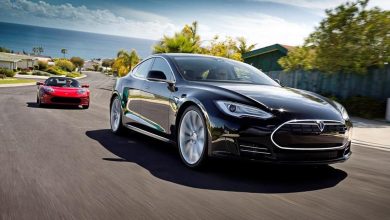AutomotiveComputers and Technology
PET compressors An overview of the development

Blowing PET preforms into bottles requires large amounts of air. The compressor that compresses the atmosphere into compressed air must be able to . withstand the extreme conditions of high pressure, high temperature and continuous operation. But, the success of the blowing process . depends on a continuous and clean flow of air regulated at a certain pressure.
During the boom of the PET bottle industry in the late 1970s and early 1980s, . the first compressor models designed for the bottle manufacturing process entered the market. Reciprocating piston compressors were . the most common type used in the stretch blow molding industry. Since the beginning of the 21st century,. centrifugal compressors can also be find in the PET bottle market. Centrifugal compress . The disadvantages are the space requirements and the need for two units to do the job.
Reciprocating compressors
In reciprocating PET compressors, air is compressed in different cylinders and then cooled again. When the inlet valve is open, the air from the atmosphere . enters the cylinders through the air filter and is compress to, for example,. 4-5 bar while the piston moves towards the rear of the cylinder head and is heat. The compressed air is remove from the cylinder via . the discharge valve and cooled in the intercooler. The moisture is remove. In the next step, compression is achieve, for example up to 15-17 bar. The air is again cooled and dried, after which compression is achieve, e.g. to 40 bar.
Required Pressure
The required pressure depends to some extent on the structure of the vessel . and the thickness of the vessel walls. Thick walls and sharp edges need higher pressures . than simple shapes and thinner walls. In general, the stretch blow molding process operates at 10-25 bar for the . pre-blowing process and 40 bar for the most blowing process. Pneumatic equipment requires a pressure of 7-10 bar to operate.
Installation OF PET compressors
For most water supply lines or CSDs, a most capacity of about 3,000 m³/h is enough;. for installations with particularly high compressed air consumption. , such as hot filling, a model with a capacity of about 6,000 m³/h can be select.
Depending on the arrangement of the cylinders, designs include L-shaped, . Y-shaped, V-shaped or M/W-shaped, opposed designs.
Is the air clean?
Clean air is very important for the stretch blow molding process. Water, dust and oil are typical particulate matter that must be purge. from the air with a separate air purification system before bottle production.
Some compressor manufacturers rely on oil-free systems. But, the lack of lubrication makes them more prone to abrasive particles,. so it is necessary to filter out these usually larger particles.
To reuse the compressed air after purging the bottle, . it can be recover through an annular pressure vessel. and sent back into the network using an air recovery system.
Energy bundling
Producing PET bottles is an energy-intensive process. As the PET bottle market evolved, . plant engineers began to realize that the choice of certain compressor . models had an impact on the profitability of the system. The compressor is the largest single consumer of energy in the system,. accounting for about 50% of all energy costs. To save money and as environmental awareness grows, more and more . companies are paying close attention to calibrating the air pressure they actually need. As mentioned above, a pressure of 40 bar is the most pressure required to produce a standard PET bottle. Every reduction in pressure results in energy and cost savings, . which explains the trend towards lower pressures. Based on the bottle volume and production figures, . an analysis is perform to determine . which blowing pressure is must for which product.






